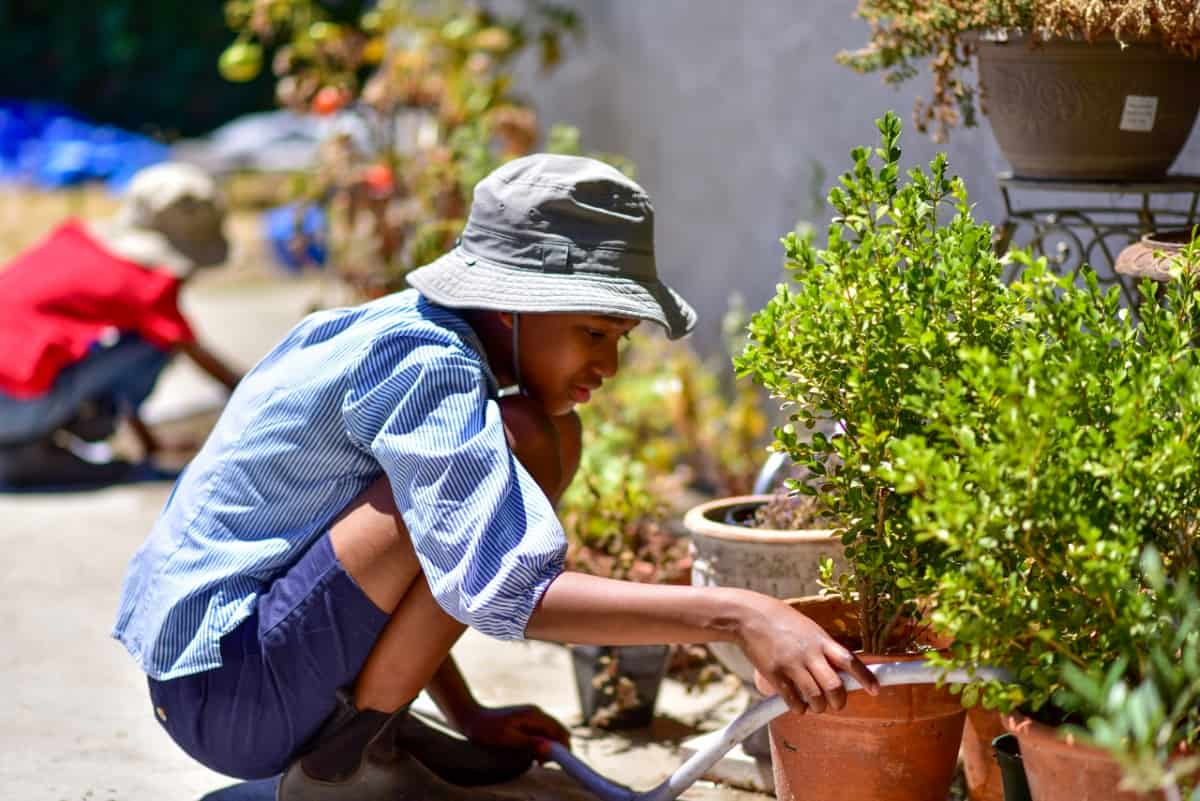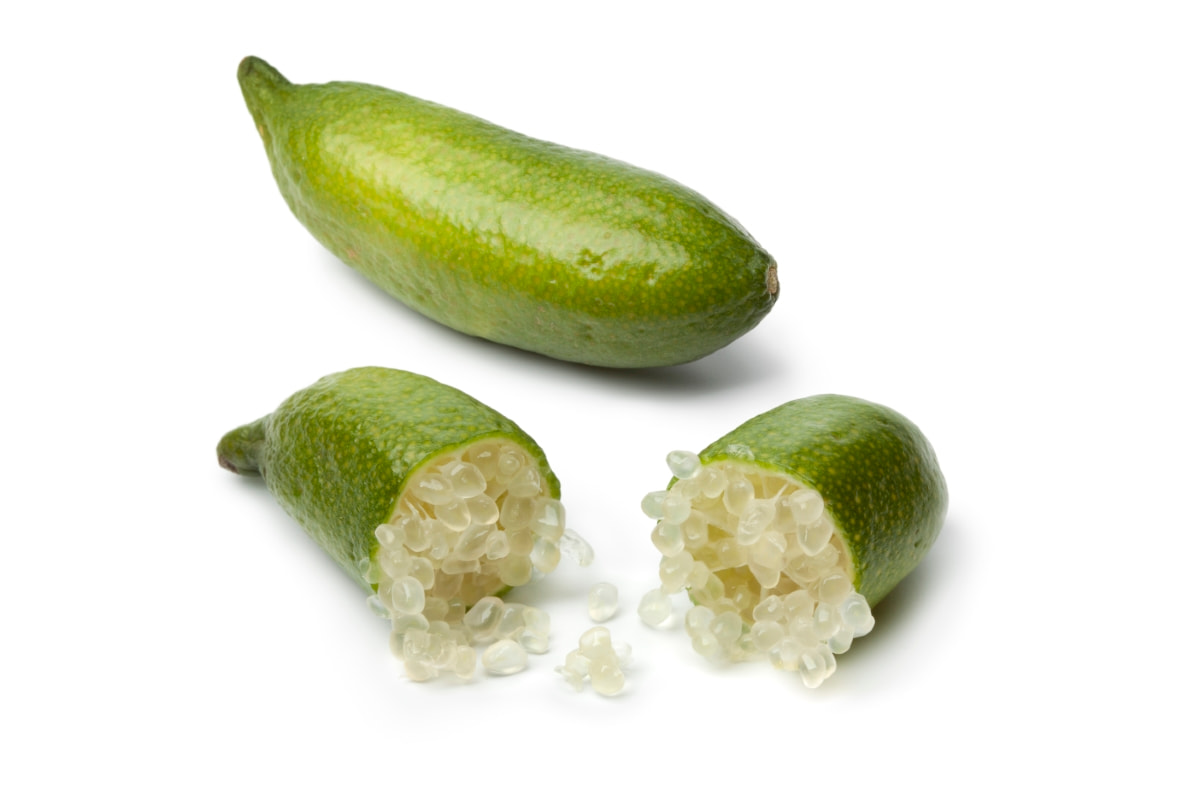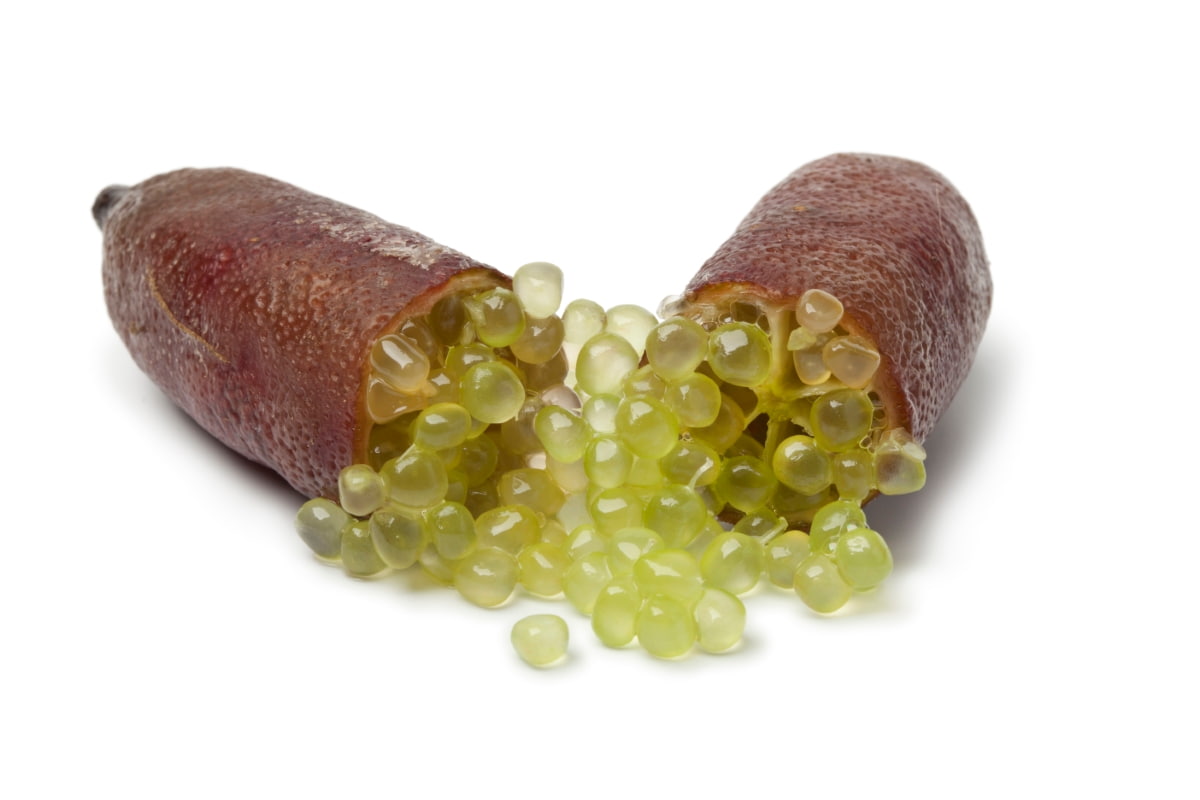Discover the art of cultivating Finger Lime trees in pots with this comprehensive guide. Whether you’re a seasoned gardener or a novice, learn the secrets of successful repotting, watering, fertilizing, pruning, and winter care to ensure optimal growth and vibrant harvests. Uncover the intricacies of providing the right environment for these unique citrus gems, known for their caviar-like pearls.

From selecting the perfect pot to mastering the balance of nutrients, this article equips you with the knowledge to nurture your Finger Lime tree to perfection, bringing a burst of citrus flavor and visual appeal to your container garden.
Finger Lime Care in Pots
Right Pot and Soil Mix for Your Potted Finger Lime Tree
Begin by choosing a spacious container with proper drainage holes to prevent waterlogging. An 18-inch diameter and a 12-inch depth pot is the best pot size for Finger Lime trees to accommodate the roots and allow for proper growth. As Finger Lime trees thrive in well-draining soil, craft an optimal soil mix for container-grown Finger Lime trees, combining potting soil, perlite, and coarse sand to ensure adequate aeration and moisture control.
Aim for a pH range of around 6.0 to 7.0, mimicking the tree’s natural habitat. This soil blend facilitates nutrient absorption and supports the development of the distinctive caviar-like pearls. Regularly inspect the pot size as your tree grows, considering repotting to accommodate its increasing root system.
Balancing Water and Drainage: Essential Tips for Potted Finger Lime Trees
While Finger Lime trees appreciate consistent moisture, it’s crucial to prevent waterlogged soil, as they are sensitive to excessive water. Yellowing leaves, wilting, root rot, and mold growth are signs of overwatering in potted Finger Lime Treesx. Adjust watering frequency and ensure well-draining soil to prevent excessive moisture. Implement a watering schedule for Finger Lime Trees in pots that allow the soil to dry partially between waterings, typically every 7-10 days, adjusting it based on environmental conditions.
Your chosen pot should have adequate drainage holes to prevent water accumulation. Use a saucer beneath the pot to collect excess water, preventing root rot. Regularly monitor soil moisture levels, adjusting your watering routine accordingly, to strike the delicate equilibrium that sustains a thriving Finger Lime tree in a pot.
Fertilizing Strategies for Finger Lime Trees in Containers: What Works Best
Use a balanced, slow-release citrus fertilizer with a formulation like 10-10-10 to provide essential nutrients without causing excessive growth. Begin fertilizing in spring as new growth emerges, continuing every 6-8 weeks during the growing season. Adjust the dosage according to label instructions, preventing over-fertilization.
Incorporate micronutrients, particularly zinc and iron, to enhance fruit development and overall health. Water the tree before applying fertilizer to avoid root burn, and ensure the soil is moist for better nutrient absorption. Monitor the tree’s response and adjust the fertilizing schedule if needed, promoting a lush, productive Finger Lime tree thriving in its container environment. Organic fertilizers for potted Finger lime trees include compost, well-aged manure, fish emulsion, and seaweed extract.
Pruning Techniques for Finger Lime Trees in Pots to Promote Healthy Growth
Pruning techniques for Finger Lime trees in small containers involve removing dead or diseased branches, ensuring a clean foundation. Encourage a bushier form by selectively pruning the tips of branches, stimulating lateral growth. Maintain an open canopy to enhance sunlight penetration and air circulation.
In case you missed it: How to Grow Fennel in a Pot: Planting, Care, Propagation from Seeds and Cuttings

Trim any crossing or crowded branches to prevent disease and improve overall tree structure. Regularly inspect for suckers emerging from the base and eliminate them promptly. Prune sparingly during the growing season, focusing on shaping and thinning, and consider more extensive pruning in late winter or early spring to rejuvenate the tree.
Pest and Disease Control in Potted Finger Lime Trees: Prevention and Solutions
- Safeguard your potted Finger Lime tree with vigilant pest and disease control. Prevent infestations by regularly inspecting leaves for signs of aphids, mites, or scale insects.
- Introduce beneficial insects like lacewings or ladybugs, or use neem oil as a natural deterrent. Ensure proper spacing and ventilation to discourage fungal diseases.
- Prune infected or damaged foliage promptly, disposing of debris away from the tree.
- Control pests by using insecticidal soap or horticultural oil as needed, following product guidelines.
- Employ copper-based fungicides for fungal issues.
- Implementing these preventative measures and swift responses to threats will fortify your potted Finger Lime tree against pests and diseases.
Seasonal Care for Finger Lime Trees in Containers: Adapting to Changing Weather
Winter care for Finger Lime trees in outdoor containers involves providing consistent moisture and regular fertilization. In hot weather, shield the tree from excessive sunlight to prevent stress and sunburn, while in colder months, protect it from frost by moving it to a sheltered location or using frost cloth. Adjust the watering frequency with respect to weather conditions, allowing the soil to dry partially between waterings.
Mulch around the tree’s base to regulate soil temperature and moisture retention. Prune in late winter or early spring for rejuvenation. By tailoring care to each season, you ensure your potted Finger Lime tree successfully navigates changing weather, yielding a bounty of flavorful pearls.
Repotting Your Finger Lime Tree: When and How to Do It Right
Knowing when and how to repot mature Finger Lime trees is vital for sustained health and growth. Repot them every 2-3 years or when the roots outgrow the current container. Opt for a slightly larger pot with proper drainage holes. Perform repotting in late winter or early spring before the growing season. Gently remove the tree, untangle any circling roots, and inspect for signs of disease. Place it in the new pot with fresh, well-draining soil, ensuring the root ball sits at the same level as before. Water thoroughly and gradually reintroduce the tree to sunlight.
In case you missed it: How to Grow Pepino Melon in Pots and Indoors: Propagation from Seeds and Cuttings

Maximizing Fruit Production in Potted Finger Lime Trees
Maximizing fruit production in potted Finger Lime trees involves strategic care. Optimize sunlight exposure by placing the container in a sunny location, ensuring at least 6-8 hours of direct sunlight daily. Implement a well-balanced, slow-release citrus fertilizer during the growing season to support fruit development.
Hand-pollinate flowers with a small brush to enhance the fruit set. Maintain consistent moisture levels, avoiding waterlogged soil. Prune selectively to encourage branching and improve air circulation. Thin out excess fruit when they are pea-sized to promote the remaining ones to develop fully. Protect against pests and diseases with regular inspections and appropriate treatments.
Winterizing Your Potted Finger Lime Tree: Steps to Protect It in Cold Weather
Shielding your potted Finger Lime tree during winter is crucial for its well-being. As temperatures drop, relocate the container to a sheltered spot, shielding it from frost and cold winds. Apply a layer of mulch, with either organic or inorganic materials, around the base to insulate the soil and retain moisture. Reduce watering, and the soil should be allowed to dry between two successive waterings to prevent root rot.
Consider wrapping the container with insulation material or burlap for additional protection. If frost is forecasted, cover the tree with frost cloth or blankets overnight. Prune dead or damaged branches before winter sets in. These steps will ensure your potted Finger Lime tree survives the winter months and emerges strong and healthy in the spring.
In case you missed it: Understanding Container Grown Brussels Sprouts: Steps to Grow in Brussels Sprouts Pots

Conclusion
From meticulous repotting and balanced fertilizing to strategic pruning, vigilant pest control, and winter protection, each aspect contributes to the tree’s health and productivity. By adapting to changing seasons and providing tailored care, you’ll not only witness the unique beauty of the Finger Lime but also savor the delightful burst of citrus pearls from your container-grown treasure.
- Ultimate Guide to Ossabaw Island Hog: Breeding, Raising, Diet, and Care
- Ultimate Guide to Juliana Pig: Raising Facts, Size, Diet, Care, and Lifespan
- Raising Lleyn Sheep: Disadvantages, Price, Uses, Characteristics, and Care
- Ultimate Guide to Meishan Pig: Breed Facts, Breeding, Raising, and Care
- Ultimate Guide to Teacup Pigs: Raising, Diet, Lifespan, Cost, and Care
- Guide to Raising Poll Dorset Sheep: Facts, Profile, Characteristics, Uses, and Care
- Ultimate Guide to Bighorn Sheep: Characteristics, Diet, Lifespan, Breeding, and Lifecycle
- Ultimate Guide to Raising Katahdin Sheep: Farming Facts, Breed Profile, Uses, and Care
- Ultimate Guide to Raising Oreo Cows: Belted Galloways Farming Facts, Profile, Uses, and Care